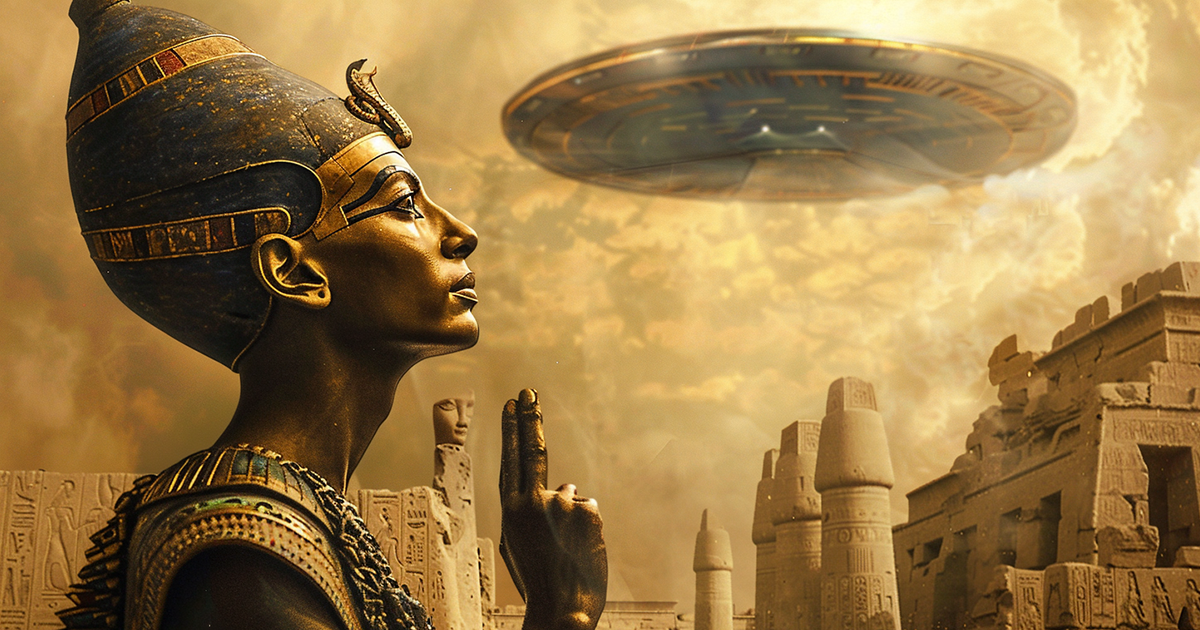Pharaoh Akhenaten, a mysterious ruler of ancient Egypt, is famously known for his unconventional religious changes and the introduction of Atenism, a worship centered around the sun disk Aten as the supreme deity. The reign of Akhenaten raises questions, especially regarding the representation of the Aten as a disk-like form resembling a spacecraft, sparking discussions about potential extraterrestrial influences. Let’s investigate the history and symbolism of Atenism and consider the diverse interpretations of this captivating aspect of ancient Egyptian faith.
Akhenaten’s rule, spanning approximately from 1353 to 1336 BCE, represented a significant shift from traditional Egyptian religious conventions. He aimed to elevate the Aten, previously a minor aspect of the sun god Ra, to the position of the ultimate deity, while reducing the prominence of other deities. This radical monotheistic belief system reflected in the establishment of a new capital city, Akhetaten (known today as Amarna), dedicated solely to the worship of the Aten.
At the core of Atenism was the portrayal of the Aten as a disk-like object emitting rays with notable hands holding symbols of life known as ankh. Some interpretations of the Aten’s representation hint at it resembling a UFO, sparking conversations about possible extraterrestrial impacts on ancient Egyptian spirituality. However, it is crucial to approach such viewpoints cautiously and explore alternative interpretations grounded in ancient Egyptian cosmology and symbolism.

One explanation for the Aten’s depiction as a disk is associated with the symbolism of the sun and its life-sustaining attributes. The Egyptians revered the sun as a source of warmth, light, and fertility, playing a central role in their daily rituals. Therefore, depicting the Aten as a radiant disk may symbolize these qualities rather than being a literal representation of a spacecraft.
Furthermore, the hands emerging from the Aten’s rays, often holding ankh symbols, may represent the sun’s role in preserving life and ensuring continuity. The ankh symbol, resembling a handle, was linked to concepts of life, immortality, and rebirth in Egyptian belief. Hence, illustrating the Aten with extended hands holding ankh symbols might convey the idea of the sun as a beneficent force granting vitality and life to the world.
Another interpretation of the Aten’s disk-like depiction stems from Akhenaten’s personal religious convictions and political motives. Some scholars suggest that Akhenaten’s advocacy for Atenism was fueled by a desire to consolidate his authority and challenge the powerful priesthood of Amun, prominent figures in traditional Egyptian religious practices. Therefore, emphasizing the Aten as the singular deity might have been a deliberate move to centralize religious power under the pharaoh’s rule.
In essence, while the portrayal of the Aten resembling a spacecraft may prompt discussions on potential extraterrestrial involvement in ancient Egyptian spirituality, it is vital to consider alternative explanations rooted in Egyptian cosmology, symbolism, and historical context. Whether perceived as symbolizing the life-giving attributes of the sun or reflecting Akhenaten’s religious and political strategies, the adoration of the Aten presents a captivating chapter in ancient Egyptian history.
